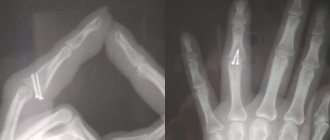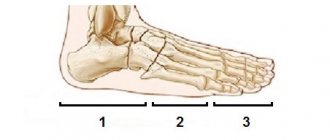The pelvis is one of the most important, although sometimes ignored, parts of the skeleton. The pelvis is shaped like a basket with a tip and its cavity contains many vital organs, including the intestines and bladder. In addition, the pelvis is at the center of gravity of the skeleton. If the body is compared to a pencil balanced horizontally on a finger, its point of balance (center of gravity) will be the pelvis.
Therefore, it is obvious that the location of the pelvis greatly affects posture. It's the same as if the central block in the tower is offset, and in this case all the blocks above the offset risk falling. And if you compare the central block with a box, then tilting can lead to the box falling out. Similar mechanisms occur when the pelvis is tilted, and the contents of the pelvis shift forward. The result is a protruding belly and protruding buttocks. Since the pelvis is the junction of the upper and lower torso, it plays a key role in body movement and balance. The pelvic bones provide support to the most important supporting part of the body – the spine. In addition, the pelvis allows the lower limbs and torso to move in a coordinated manner (in tandem). When the pelvis is positioned normally, various movements are possible, twisting and bending and the biomechanics of movements are balanced and the distribution of load vectors is even. Displacement (distortion) of the pelvis from normal positions causes dysfunctional disorders of the spine, as there is a change in the axis of load distribution during movement. For example, if there is a misalignment of the axle in a car, then rapid wear of the wheels occurs. Something similar happens in the spine, lever effects and excess load on certain points occur, which lead to rapid wear and tear of the spinal structures. Therefore, often the main cause of back and neck pain is a change in the position of the pelvis (displacement, distortion). Changing the position changes the biomechanics, which can lead to degenerative changes in the spine, disc herniation, scoliosis, osteoarthritis, spinal canal stenosis, sciatica, etc. Pelvic misalignment also leads to pain and dysfunction in the neck, neck pain radiating to the shoulders and arms, and contributes to the development of carpal tunnel syndrome and other problems in the extremities.
Causes of pelvic distortion (displacement)
First of all, pelvic distortion is caused by normal muscle imbalance. Technology is developing very quickly and a sedentary lifestyle is one of the main reasons for the development of imbalance, because our body requires a certain amount of movement, which it does not receive. Prolonged sitting and low physical activity are sufficient conditions for the development of muscle imbalance, leading to pelvic distortion and, as a result, the appearance of dysfunctional disorders in the spine and back pain.
Accidents and injuries are common causes of pelvic distortion , such as a side impact, lifting heavy objects while twisting, falling to one side, or carrying heavy objects from the side, such as carrying a child on your hip or carrying a heavy bag constantly on one shoulder. In women, the pelvis is less stable from birth than in men, since a certain flexibility and elasticity of the pelvic structures is necessary for normal pregnancy and childbirth. Therefore, pregnancy is often the main cause of pelvic displacement in women.
Damage to the pelvic muscles is the most common cause of misalignment. Injured muscles typically tighten and shift in order to protect surrounding structures. If the muscles in the pelvic area, such as the sacrum, are damaged, then the tightening of the muscles will lead to an impact on the ligaments attached to the pelvis and joints. As a result, structures such as the sacroiliac joints will also have a certain disposition. Muscle tightening after injury persists until the muscle is completely restored and during this period of time the pelvis remains in an abnormal position.
The difference in leg length can also be a cause of pelvic distortion and in such cases the distortion can be from right to left or vice versa. But the displacement may also be forward or backward, or there may be a twisting of the pelvis.
Many conditions can lead to muscle spasms that cause the pelvis to twist. A disc herniation can cause an adaptive muscle spasm and, in turn, antalgic scoliosis with functional pelvic distortion . Active people often experience tension in the calf muscles, which in turn creates tension around the pelvis. Surgeries such as hip replacement can also cause changes in the position of the pelvis.
Because the pelvis is one of the most stressful areas of the body due to movement and weight support, movements that cause pain and stiffness are a strong indicator of problems with the alignment of the pelvis. Back pain in particular is a common indicator of pelvic obliquity . In addition to participating in movement, the pelvic cavity contains: part of the digestive organs, nerves, blood vessels, and reproductive organs. Therefore, in addition to back pain, there may be other symptoms, such as numbness, tingling, bladder and bowel problems, or reproductive problems. Most often, changes in the following muscles lead to pelvic disposition:
M. Psoas major (psoas muscle) anatomically can lead to extension and flexion of the hip, which leads to anterior displacement of the pelvis.
The M.Quadriceps (quadriceps), especially the rectus muscle, can cause hip flexion.
M.Lumbar erectors can cause lumbar extension.
M. Guadratus lumborum with bilateral compaction can cause an increase in lumbar extension.
M.Hip adductors can cause anterior pelvic tilt as a result of internal rotation of the hip. This leads to shortening of the adductor muscles.
M.Gluteus maximus (gluteus maximus) is responsible for hip extension and is an antagonist of the psoas major muscle.
M.Hamstrings The muscle of the back of the thigh, this muscle can be tightened. The muscle can be weak, but at the same time thicken due to the fact that it is a synergist of the gluteus maximus muscle and this can be of a compensatory nature. The deep abdominal muscles, including the transverse abdominis and internal obliques, may become tight due to weakened lumbar erectors.
Classification of pelvis types
A line drawn through the transverse diameter of the plane of the entrance to the pelvis divides it into anterior and posterior segments. The shape of these segments is taken into account when classifying pelvic types. Thus, the nature of the posterior segment determines the type of pelvis, the anterior segment determines the tendency, which helps to identify mixed types of pelvis.
Gynecoid pelvis . The posterior sagittal diameter is slightly smaller than the anterior sagittal diameter, the sides of the posterior segment are rounded and wide. Considering that the transverse diameter of the pelvic inlet is almost the same as the anteroposterior one, the pelvic inlet has an almost round or oval shape. The pelvic walls are straight, the ischial spines do not protrude and the distance between them exceeds 10 cm. The pubic arch is wide.
The sacrosciatic notch is round. The sacrum is not deviated either anteriorly or posteriorly. It occurs in 50% of women and has the best prognosis for vaginal birth.
The anthropoid pelvis is distinguished by the fact that the direct diameter of the entrance to the pelvis exceeds the transverse one, therefore the shape of the entrance to the pelvis has the appearance of an oval, narrowed in the anteroposterior direction. The anterior segment is narrow. The sacrosciatic notch is wide, the walls of the pelvis somewhat converge. The sacrum is usually straight and has 6 vertebrae, making the anthropoid pelvis the deepest of all pelvic types. The ischial spines protrude somewhat. The subpubic arch is well defined, but may be somewhat narrowed. This type of pelvis occurs in 25% of white women and about 50% in representatives of other races.
Android pelvis . The posterior sagittal diameter of the entrance is significantly shorter than the anterior sagittal diameter, which limits the space for the fetal head. The walls of the posterior segment are not round and approach wedge-shaped. The anterior segment is narrow and triangular. The lateral walls of the pelvis tend to move closer together, the ischial spines protrude, and the subpubic arch is narrowed. The sacrosciatic notch is narrow. The sacrum protrudes somewhat into the pelvis and is of course straight, with an unpronounced depression. The posterior sagittal diameter decreases from the inlet to the outlet of the pelvis due to protrusion of the sacrum. May occur in 30% of women. A narrowed android pelvis has a poor prognosis for vaginal delivery.
Platypeloid pelvis is a pelvis that has a flattened gynecoid shape, with a short anteroposterior (straight and wide transverse) diameter. The angle of the anterior segment is very wide, the arcs of the anterior and posterior segments are of regular shape. The sacrum is short, the sacrosciatic notches are wide. This type of pelvis is less common (in 3% of women).
Symptoms
Symptoms of displacement (distortion) of the pelvis can be either moderate or severe and significantly impair the functionality of the body. With moderate misalignment, a person may feel unsteady when walking or may experience frequent falls.
The most common symptoms such as pain are:
- In the lower back (with irradiation to the leg)
- Pain in the hip, sacroiliac joints, or groin
- Pain in the knee, ankle or foot Achilles tendon
- Pain in shoulders, neck
If the pelvis is misaligned for a long time, the body will correct and compensate for biomechanical imbalances and asymmetries and corresponding adaptations of muscles, tendons and ligaments will occur. Therefore, treatment may require some time. In addition, pelvic distortion can be difficult to correct, since over time a pathological pattern of movements is formed. The longer the period of pelvic distortion, the longer it takes to restore normal muscle balance.
Clinical determination of pelvic capacity
Diagonal conjugate
In many narrowed pelvises, the straight (antero-posterior) diameter of the pelvic inlet is reduced. To predict childbirth, it is important to determine this size, but this is only possible with a special instrumental study (X-ray pelvimetry, nuclear magnetic resonance and computer pelvimetry, ultrasound pelvimetry). But the distance between the lower edge of the pubic symphysis and the promontory of the sacrum (diagonal conjugate) can be determined during a gynecological examination.
When determining the diagonal conjugate, the doctor inserts two fingers into the vagina, determines the mobility of the coccyx and the nature of the anterior surface of the sacrum (vertical and lateral arches). In a normal pelvis, only the last three sacral vertebrae can be palpated, whereas in a narrowed pelvis, the entire surface of the sacrum is palpable. If the size of the diagonal conjugate exceeds 11.5 cm, the pelvic capacity is considered sufficient for vaginal delivery, provided that the fetus is of normal size.
Transverse narrowing of the pelvis (this type of narrowing of the pelvis can be observed with a normal anteroposterior diameter) can only be detected with a special study (X-ray pelvimetry, nuclear magnetic resonance and computer pelvimetry, ultrasound pelvimetry). With ultrasound pelvimetry, it is possible to determine the real conjugate, the size of the pelvic planes, the biparietal size of the fetal head, its location and insertion, and the expected weight of the fetus.
Diagnosis and treatment
Pelvic distortion , as a rule, is easily diagnosed during a physical examination of the patient. If it is necessary to diagnose changes in the spine or hip joints, instrumental examination methods such as radiography or MRI (CT) are prescribed.
There are various treatment options for pelvic distortion , and these methods depend on the cause that led to the pelvic distortion. When treating pelvic torsion, for example, it is necessary to reduce muscle damage. For this, various physiotherapy techniques and NSAIDs can be used. If the pelvic distortion is caused by a difference in the length of the limbs, then the use of individual insoles or surgical treatment methods is necessary.
But, in any case, treatment of pelvic distortion is effective only in combination with the influence on the pathogenetic links that led to a change in the position of the pelvis and disruption of biomechanics (physiotherapy, massage, manual therapy and exercise therapy). Exercise therapy is the leading method of treating pelvic disposition, especially when the cause of pelvic distortion is muscle problems.
MRI of the pelvis with contrast
MRI of the pelvic bones shows multiple foci, which indicates metastatic lesions
Contrast-enhanced magnetic resonance imaging improves imaging capabilities. An enhanced study is carried out to diagnose the tumor process, including detection of metastases in the pelvic bones, early detection of tumor recurrence after treatment, clarification of the severity of the inflammatory process, destruction, etc. Gadolinium-based contrast has a high safety profile and does not require a preliminary assessment of renal function. Side effects from the introduction of a paramagnetic agent are recorded extremely rarely. In 99.9% of cases, the study proceeds without complications. Contraindications to contrast:
- history of allergic reaction to gadolinium (during a previous MRI scan);
- receiving replacement cleansing therapy for end-stage renal failure;
- period of bearing a baby;
- early childhood.
General contraindications to MRI:
- implanted cardiac and neurostimulators, hearing aids, injectors for drug delivery, prosthetic joints, vascular clips, etc.;
- the volume of the hips is greater than the diameter of the drum;
- acute condition requiring resuscitation;
- mental and neurological diseases with uncontrolled motor activity.









